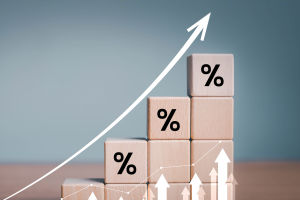A debt cycle is not always dramatic.
Often, it begins subtly through small borrowing, routine credit card use, or short-term loans that seem manageable.
Over time, however, debt can spiral into a pattern where repayment becomes impossible without incurring more debt. This creates a cycle that erodes financial stability, traps cash flow, and limits personal economic growth. Many individuals fall into this loop not because of reckless spending, but due to economic pressures, stagnant wages, rising living costs, or unexpected emergencies. Recognizing the early indicators of a debt cycle is essential to breaking free from it.
Minimum Payments Becoming the Norm
One of the most telling signs of financial entrapment is when a borrower only makes minimum payments on revolving credit accounts. While this might seem like a responsible action, it actually signals cash flow limitations and allows interest to accumulate disproportionately. In the long term, this approach extends repayment timelines and inflates total debt.
Minimum payments can create a false sense of progress. The debt remains largely untouched while interest accrues aggressively, locking individuals into prolonged repayment structures.
Greg McBride, financial analyst, explains: "If you're continually adding to your debt rather than making consistent progress on paying down the balances, you're headed down the wrong path financially. Another clear warning sign that you may be carrying too much debt is if your total payments for non-mortgage debt exceed 15 percent of your monthly gross income."
Relying on New Credit to Pay Off Old Debt
Using one credit source to cover another such as taking out a new loan or credit card to settle existing obligations—is a hallmark of the debt trap. This practice may momentarily relieve pressure but increases total liabilities and fees. More critically, it delays resolution while deepening the financial pit.
This kind of refinancing becomes especially problematic when driven not by strategy, but by necessity. It's an indication that existing income is insufficient to manage current debt obligations.
Debt Balances Stay the Same or Grow Over Time
If debt levels remain unchanged or increase over several months despite regular payments, it likely points to high interest charges or ongoing reliance on borrowing. This plateau or growth, despite consistent effort, reveals that current strategies are inadequate. Professional financial planners often see this in clients who are stuck in high-interest debt instruments. Without targeted repayment tactics such as debt avalanche or snowball methods—borrowers may find themselves stagnant despite intentions to improve.
Skipping Payments or Juggling Due Dates
Missing payment deadlines or constantly shifting which bills get paid this month is more than poor budgeting—it often signals overextended finances. This type of juggling suggests that obligations exceed income and that the household is operating in a reactive mode.
Over time, this behavior can damage credit scores, increase interest rates, and introduce late fees. The financial strain may also increase emotional stress, which contributes to impaired judgment around money management.
Little or No Emergency Savings
Another subtle yet significant red flag is the absence of an emergency fund. Individuals trapped in debt cycles often cannot afford to set aside savings, as most or all disposable income is directed toward repayment. This lack of financial cushion leaves borrowers vulnerable to unexpected costs, whether medical, automotive, or housing-related. Each new surprise, then, leads to additional borrowing, reinforcing the cycle.
Stress or Denial Surrounding Financial Reality
Persistent financial anxiety, reluctance to open bills, or avoiding conversations about money are psychological symptoms of being overwhelmed by debt. When individuals feel helpless or ashamed, they may disconnect from their financial reality. Financial avoidance is a coping mechanism, but it often leads to worsening debt conditions. Awareness and transparency are crucial first steps toward regaining control.
High Debt-to-Income Ratio
A concrete metric often used by financial advisors is the debt-to-income (DTI) ratio. When debt obligations consume more than 36% to 43% of gross income, the risk of becoming trapped in unsustainable borrowing patterns increases significantly. A high DTI ratio not only limits borrowing capacity but also restricts lifestyle flexibility. Rent, utilities, food, transportation—all essential expenses must compete with debt repayments, which can create daily financial pressure.
A debt cycle does not occur overnight, nor does it resolve quickly. But early recognition, paired with targeted strategies, can interrupt the pattern. Seeking professional guidance, restructuring repayments, and committing to budgeting are essential components of recovery.
Understanding these warning signs empowers individuals to act before the situation worsens. While escaping the debt cycle requires discipline and time, financial freedom is not out of reach. With the right tools and mindset, the cycle can be broken—and replaced by a sustainable, confident approach to personal finance.


